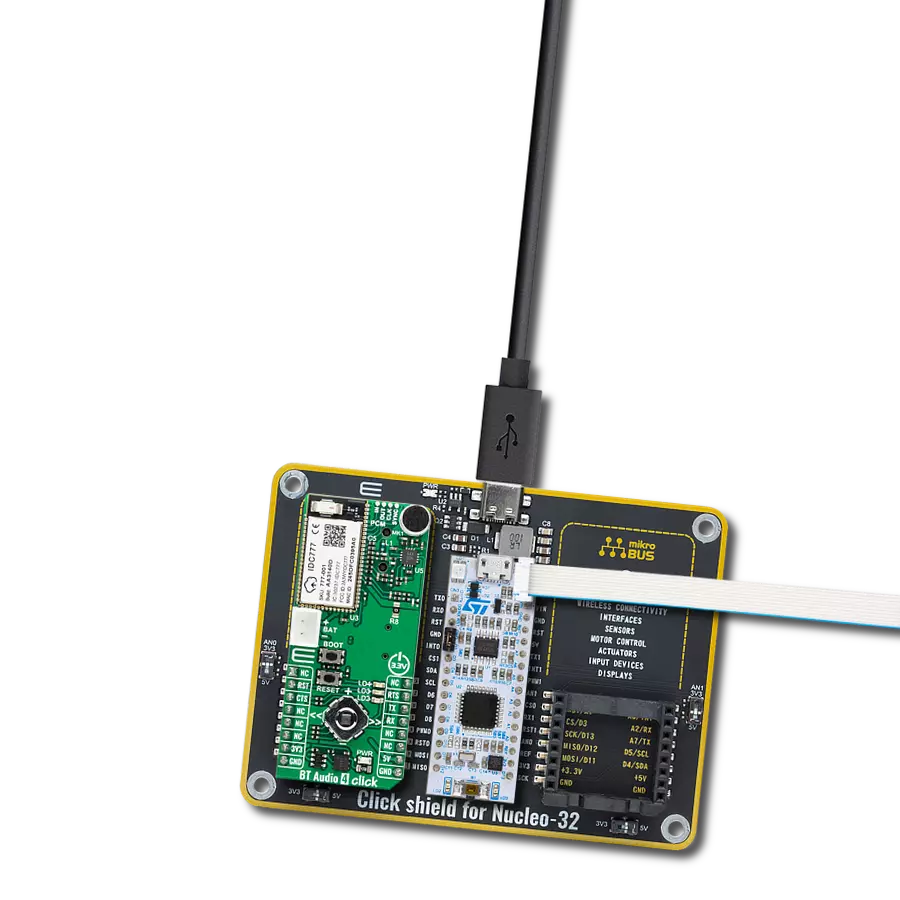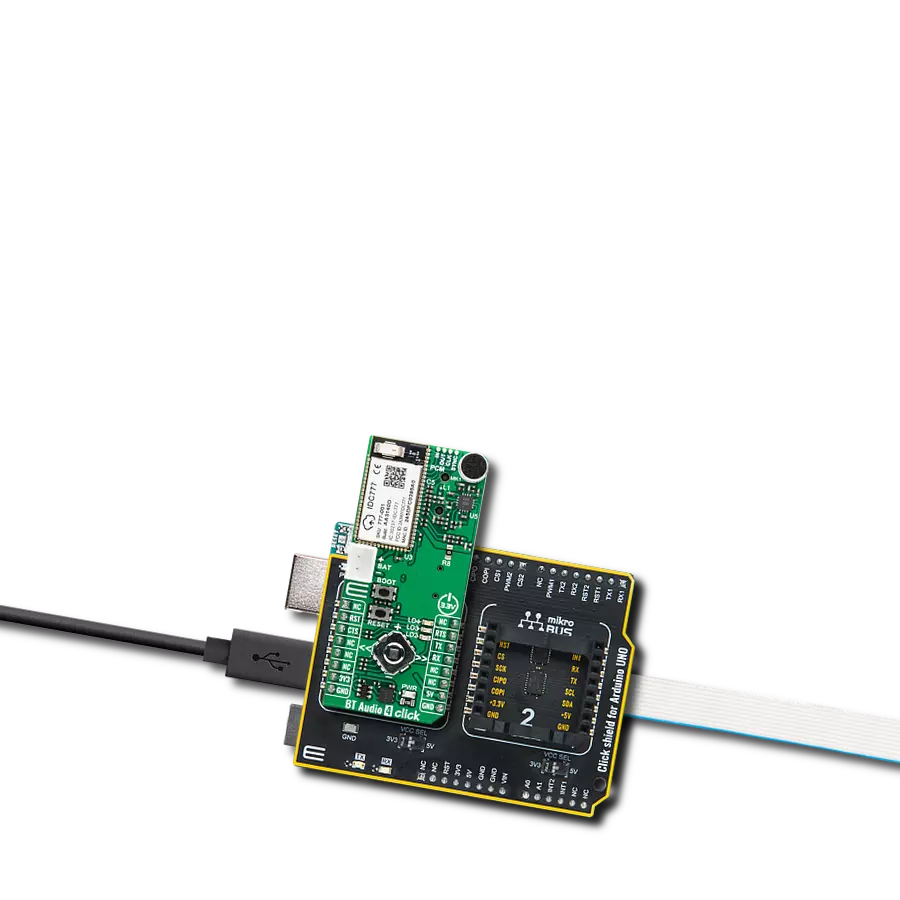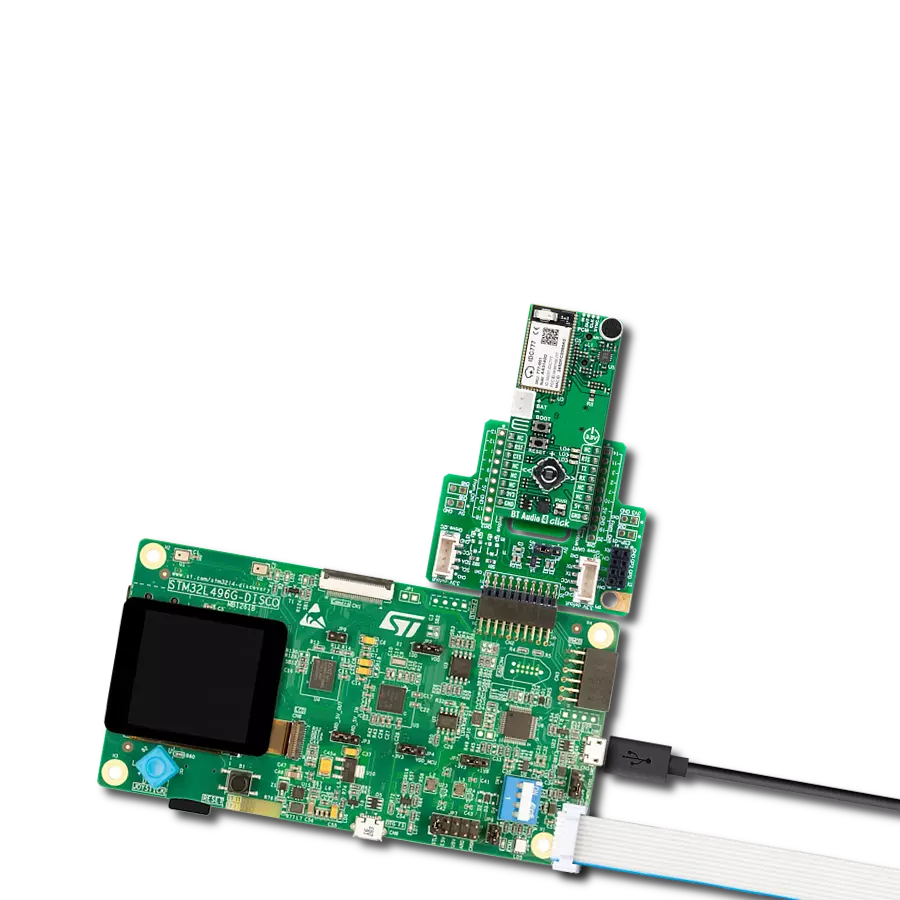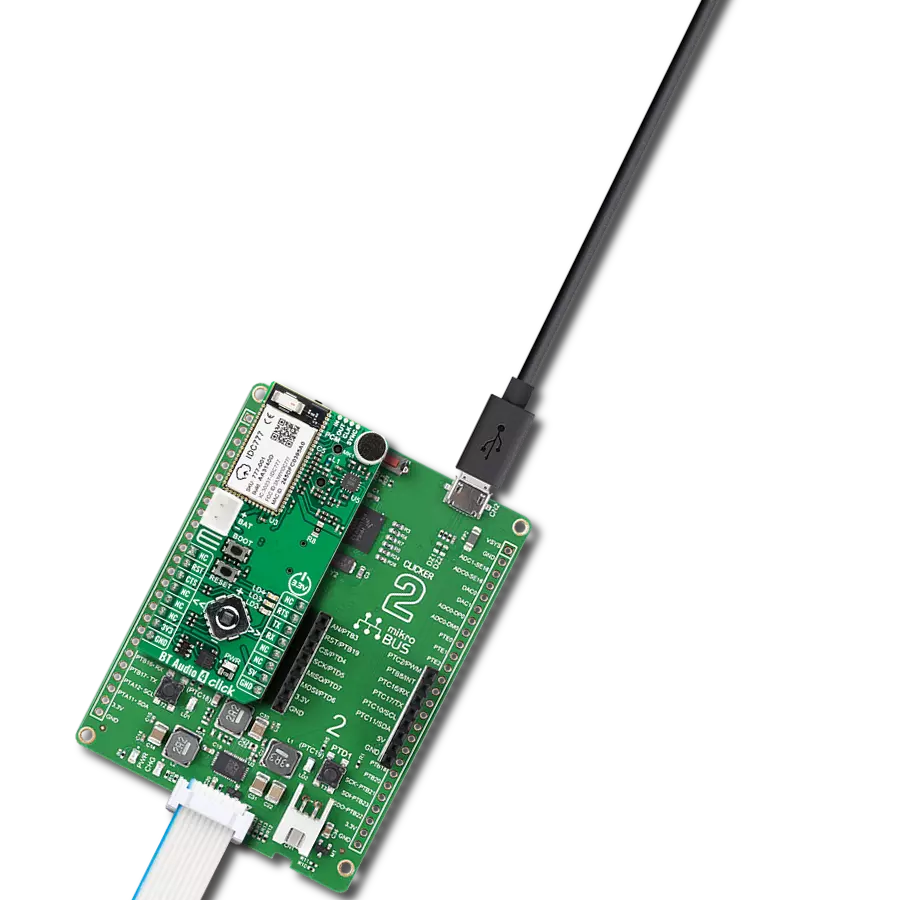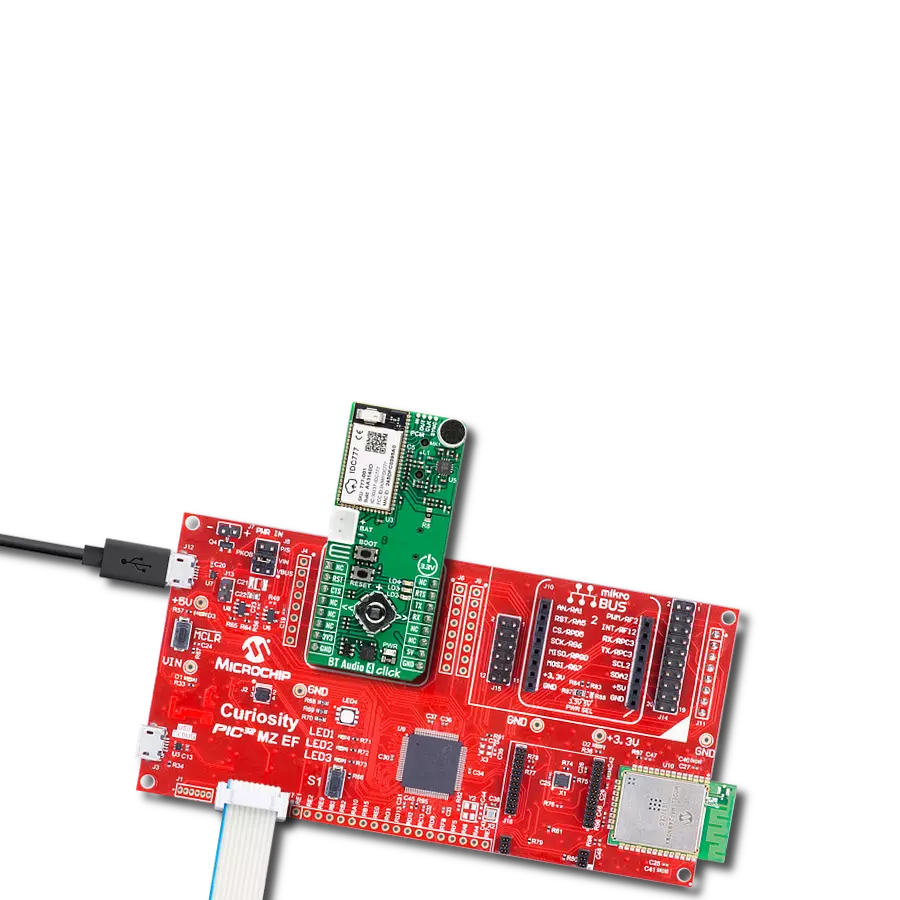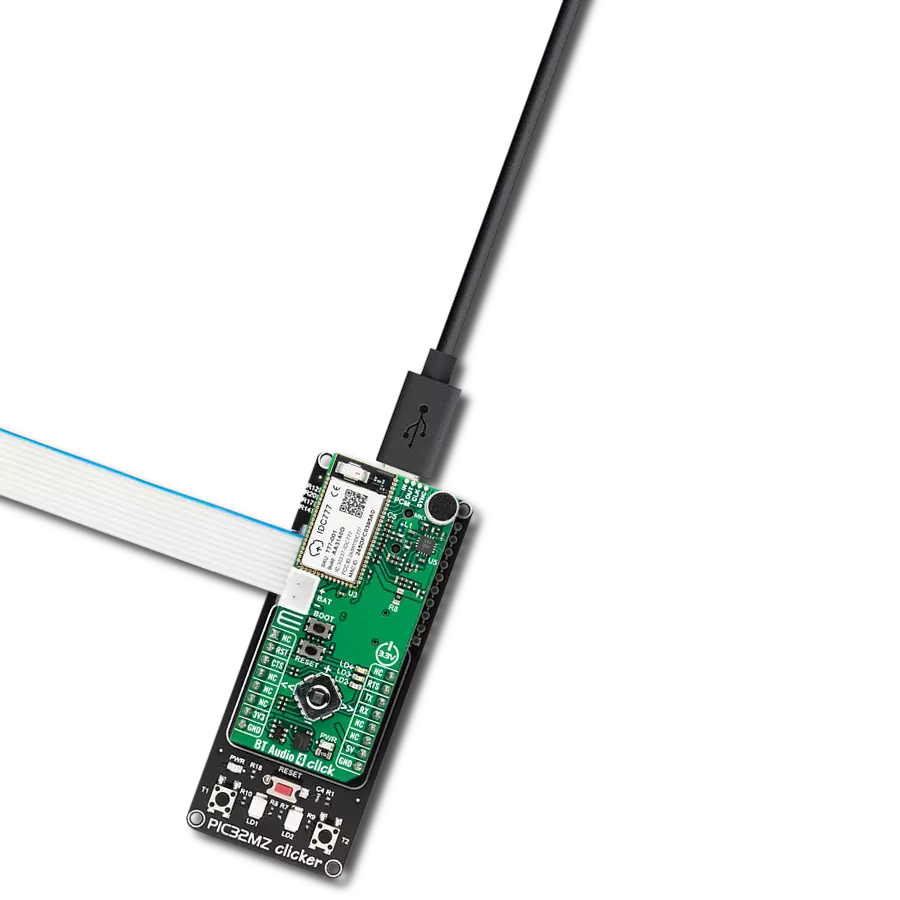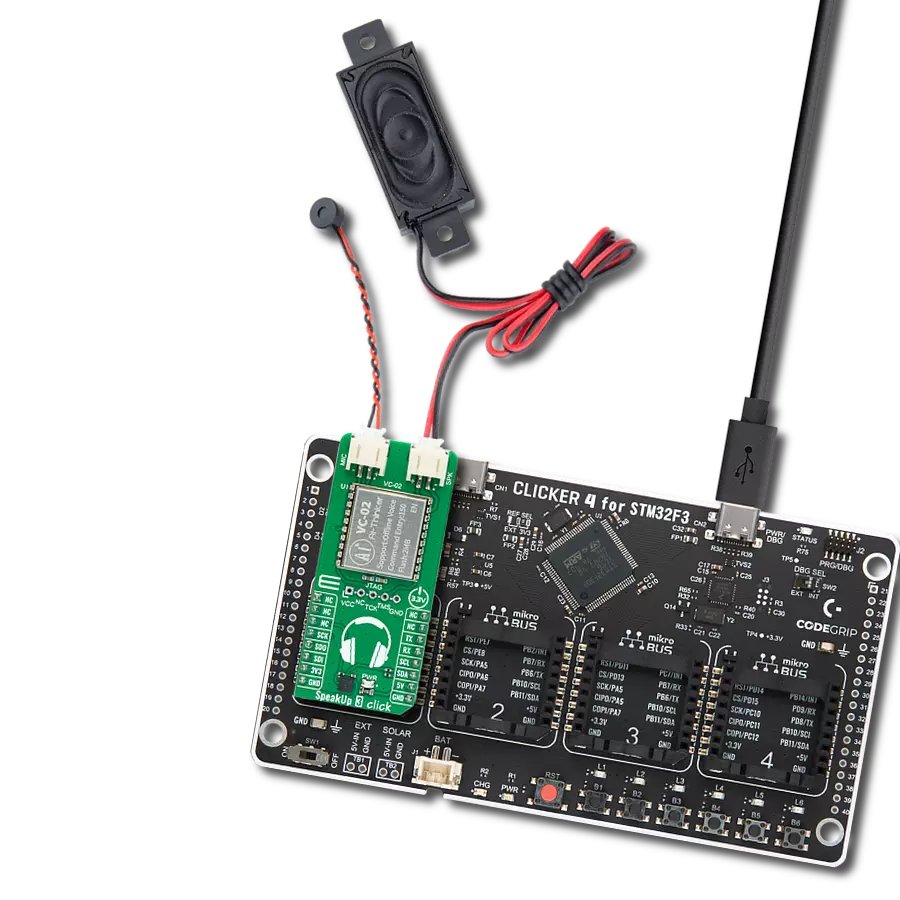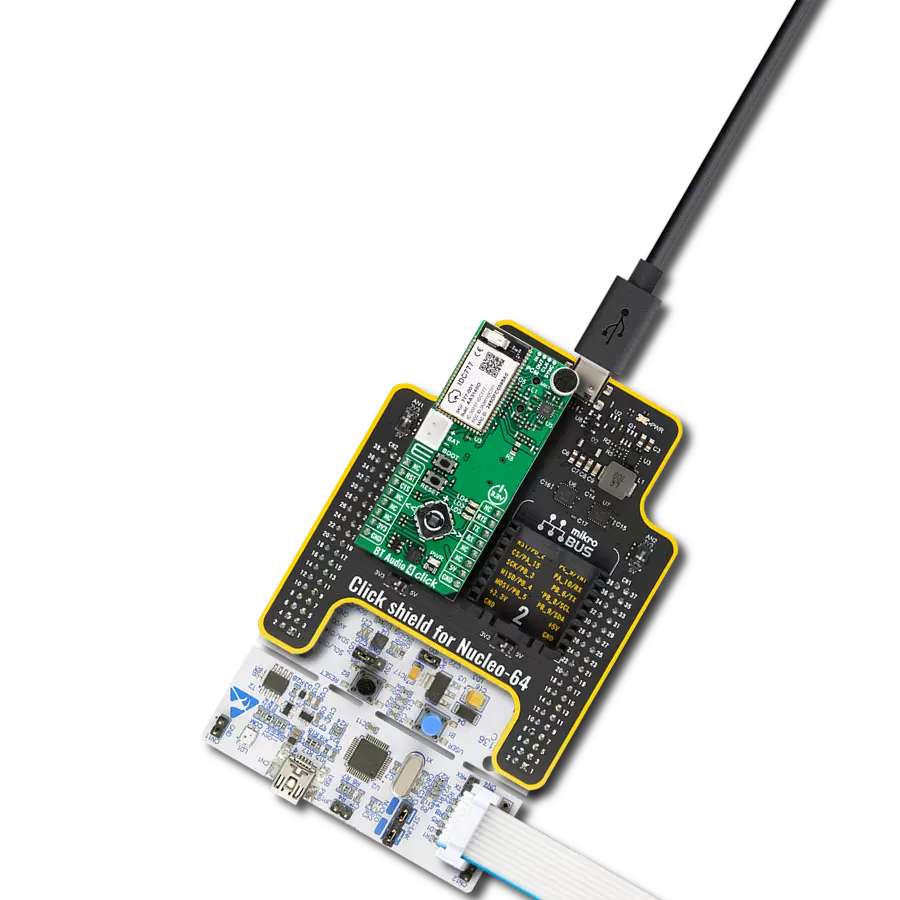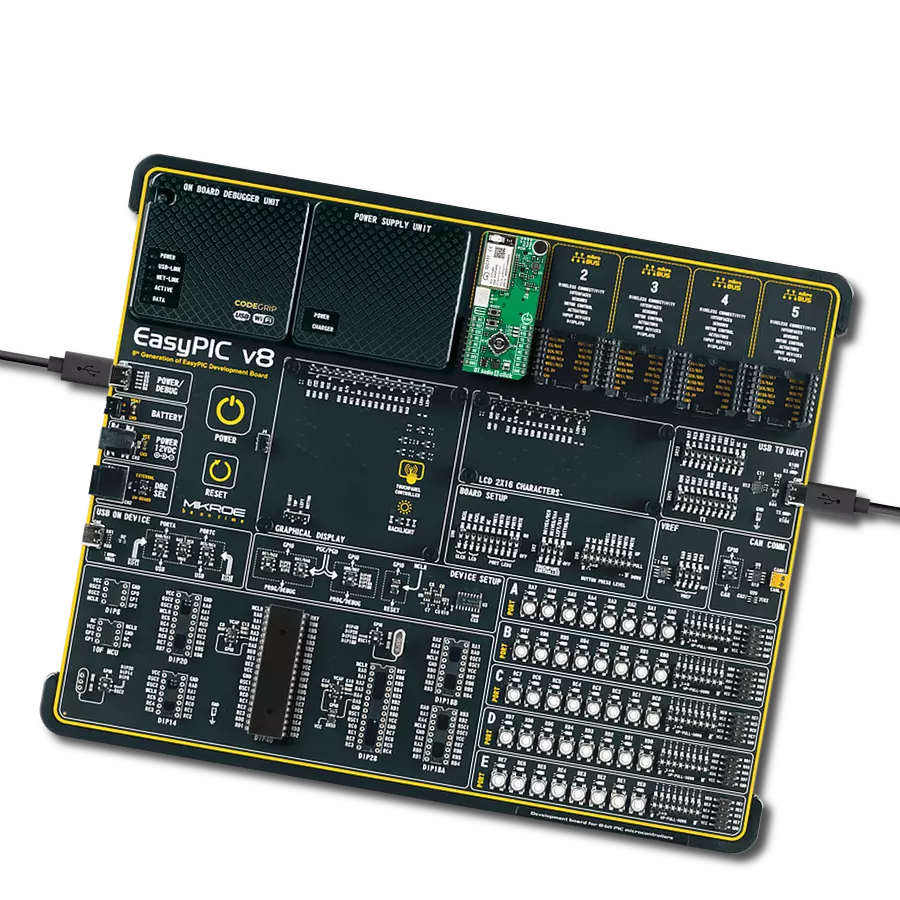Pure offline speech recognition solution
A
A
Hardware Overview
How does it work?
SpeakUp 3 Click is based on the VC-02, an offline voice recognition AI module from Ai-Thinker Technology, characterized by high reliability and robust versatility. The VC-02 module uses an integrated voice chip US516P6 from Unisound, which continuously optimizes and innovates algorithms in speech recognition technology. The offline recognition algorithm is deeply integrated with the chip architecture, providing customers with an ultra-low-cost offline voice recognition solution. This board can be widely and quickly applied to all smart small household appliances and products requiring voice control. The US516P6 chip uses a 32-bit RSIC architecture core, running at 240MHz, and incorporates a DSP instruction explicitly set for signal processing and speech recognition, an FPU arithmetic unit that supports floating-point operations, and an FFT accelerator (support 1024-point complex FFT/IFFT operations, or 2048-point real FFT/IFFT operations). What makes this module unique are features like
offline identification of 150 local instructions and self-learning of wake-up words, RTOS lightweight system, 90% recognition rate in a far field distance from 1 up to 5m, firmware update feature, as well as the selection of the communication method with the module. This Click board™ comes with a configurable host interface allowing communication with MCU using the chosen interface. The VC-02 can communicate with MCU using the UART interface, a default communication interface with commonly used UART RX and TX pins, and a default baud rate of 115200bps. Users can also use other interfaces, such as SPI and I2C, to configure the module and write the library by themselves. At the center of the SpeakUp 3 Click, an additional unpopulated header offers full support for debugging and programming capabilities. The Ai-Thinker has provided its users with a VC series development page. With a simple registration, they can create
their own command list/SDK/firmware for this module quickly and easily for free. With this header, the user can use a JTAG interface, in addition to the UART interface, for programming and debugging available through the JTAG interface pins (TCK and TMS). For more information and help when creating custom firmware, you can contact their help center. A special addition to this Click board™ are connectors, marked as MIC and SPK, for an analog omnidirectional microphone and 8Ω 2W cavity speaker from Shenzhen Anxinke Technology. These parts can be found in the same package as the Click board or can be acquired as a solo version in our shop. This Click board™ can only be operated with a 3.3V logic voltage level. The board must perform appropriate logic voltage level conversion before using MCUs with different logic levels. However, the Click board™ comes equipped with a library containing functions and an example code that can be used as a reference for further development.
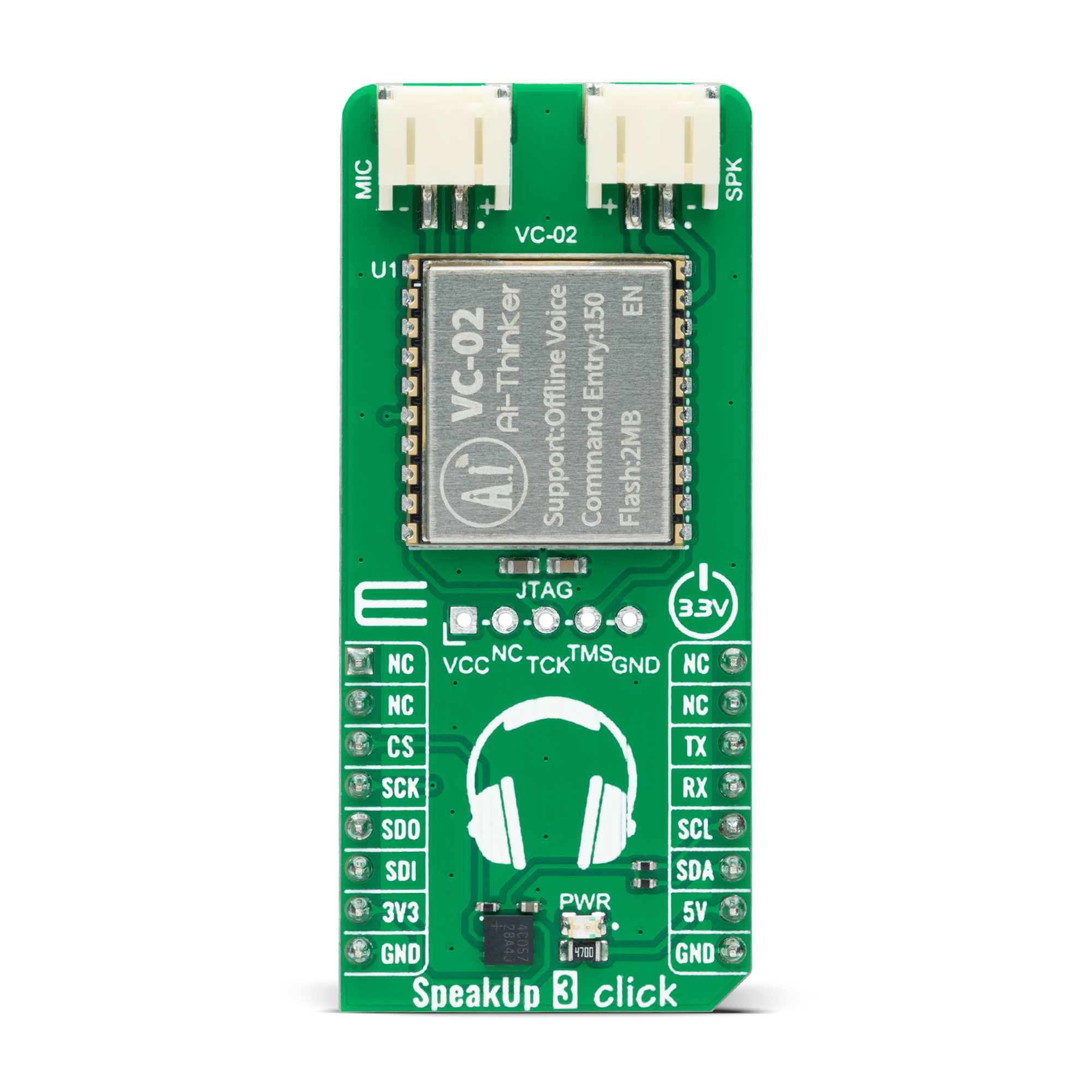
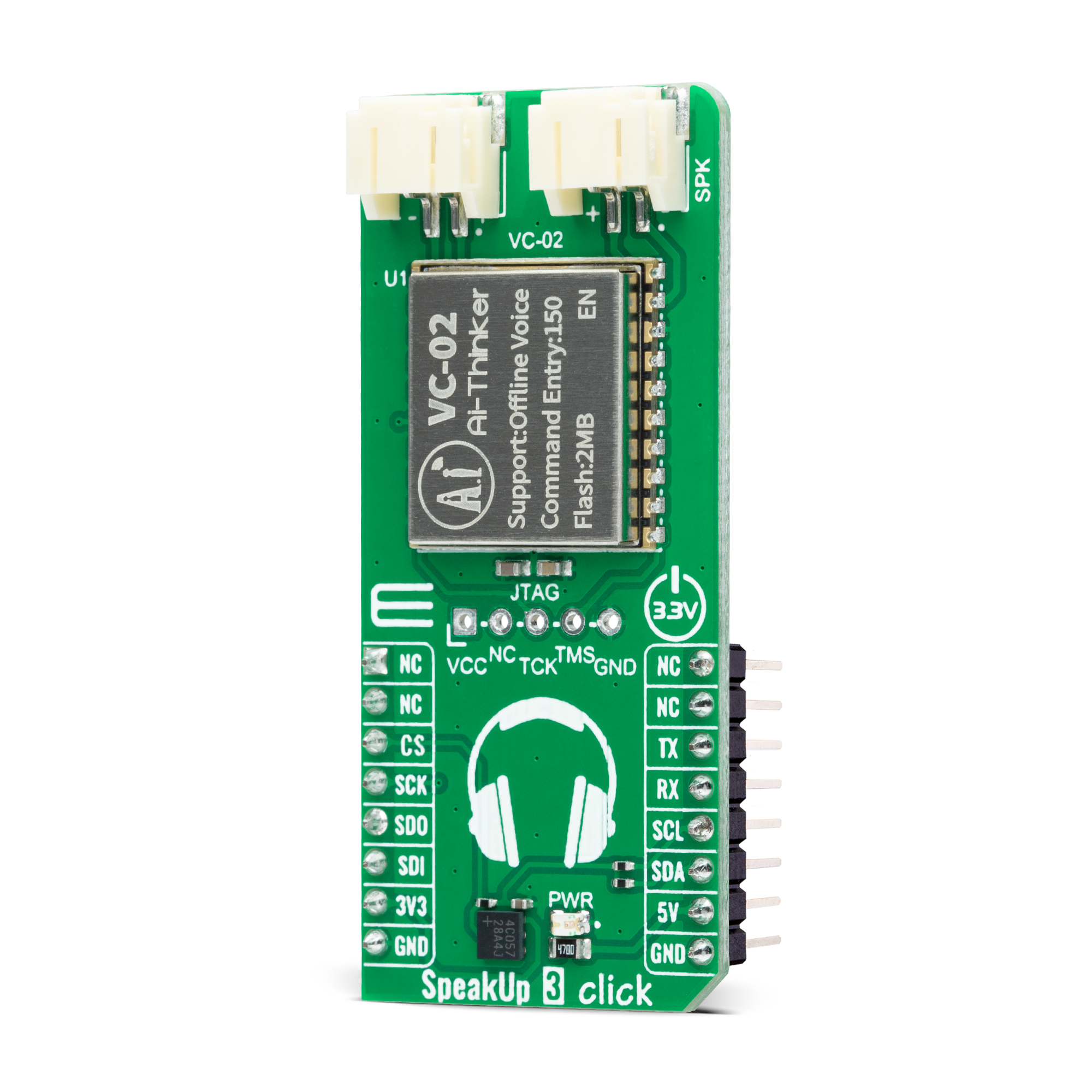
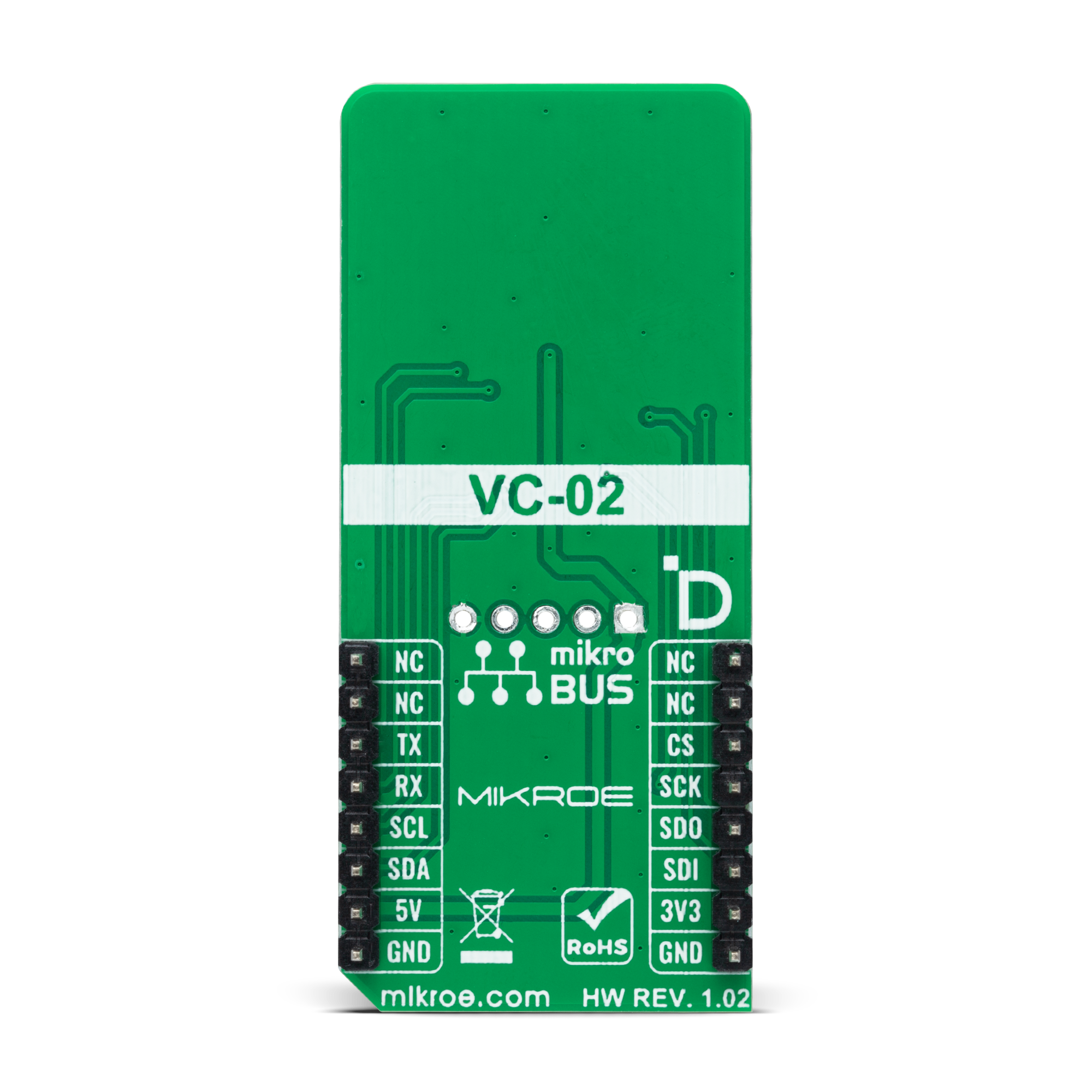
Features overview
Development board
PIC18F57Q43 Curiosity Nano evaluation kit is a cutting-edge hardware platform designed to evaluate microcontrollers within the PIC18-Q43 family. Central to its design is the inclusion of the powerful PIC18F57Q43 microcontroller (MCU), offering advanced functionalities and robust performance. Key features of this evaluation kit include a yellow user LED and a responsive
mechanical user switch, providing seamless interaction and testing. The provision for a 32.768kHz crystal footprint ensures precision timing capabilities. With an onboard debugger boasting a green power and status LED, programming and debugging become intuitive and efficient. Further enhancing its utility is the Virtual serial port (CDC) and a debug GPIO channel (DGI
GPIO), offering extensive connectivity options. Powered via USB, this kit boasts an adjustable target voltage feature facilitated by the MIC5353 LDO regulator, ensuring stable operation with an output voltage ranging from 1.8V to 5.1V, with a maximum output current of 500mA, subject to ambient temperature and voltage constraints.
Microcontroller Overview
MCU Card / MCU
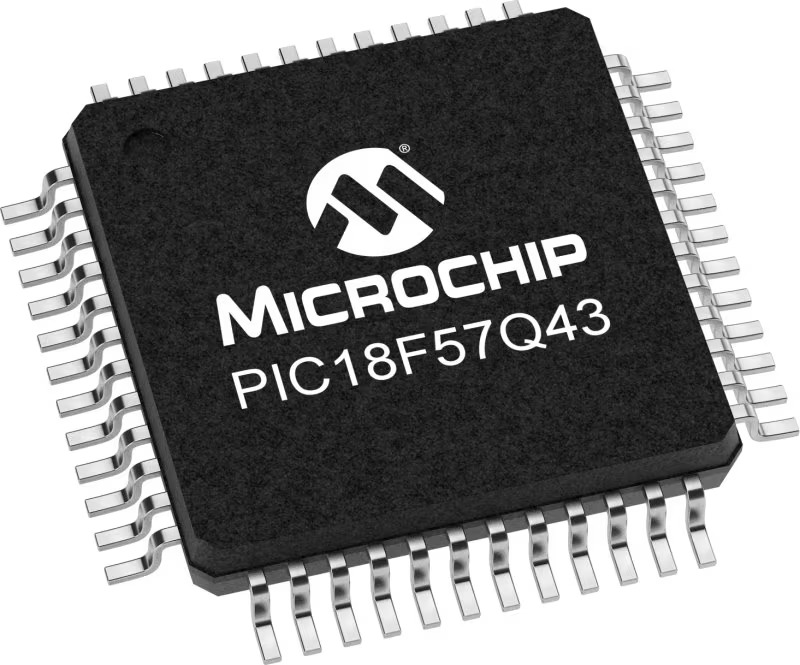
Architecture
PIC
MCU Memory (KB)
128
Silicon Vendor
Microchip
Pin count
48
RAM (Bytes)
8196
You complete me!
Accessories
Curiosity Nano Base for Click boards is a versatile hardware extension platform created to streamline the integration between Curiosity Nano kits and extension boards, tailored explicitly for the mikroBUS™-standardized Click boards and Xplained Pro extension boards. This innovative base board (shield) offers seamless connectivity and expansion possibilities, simplifying experimentation and development. Key features include USB power compatibility from the Curiosity Nano kit, alongside an alternative external power input option for enhanced flexibility. The onboard Li-Ion/LiPo charger and management circuit ensure smooth operation for battery-powered applications, simplifying usage and management. Moreover, the base incorporates a fixed 3.3V PSU dedicated to target and mikroBUS™ power rails, alongside a fixed 5.0V boost converter catering to 5V power rails of mikroBUS™ sockets, providing stable power delivery for various connected devices.
Microphone with PH2.0 female connector is an analog-type omnidirectional electret microphone, an electrostatic capacitor-based microphone, and is available with a lead terminated in a PH2.0 female connector. This microphone eliminates the need for a polarizing power supply by using permanently-charged material. With operating frequencies ranging from 100 to 20.000Hz, the microphone features sensitivity ratings as low as -40dB (±3) and signal-to-noise ratios from 57 to 70dBA (typical 60dBA). Housed in a compact package with diameters as small as 6mm, this omnidirectional microphone is ideally suited for various high-quality recordings in industrial and outdoor applications where moisture and environmental contaminants are present.
Speaker with PH2.0 female connector is an 8Ω 2W portable all-in-one passive cavity speaker available in wire-lead mount configuration with a PH2.0 female connector with an operating frequency of 100kHz. This speaker is characterized by a long service life based on excellent build-material and technology, which enhance its service life, making it convenient and reliable. It is also built on strict quality control standards (design improved for more durability) with a low distortion rate, keeping the sound stable (clear sound quality providing superb music reproductions). Housed in a compact package with dimensions of 40×20×5.8mm (LxWxH), this cavity loudspeaker offers stable performance ideally suited for various audio-producing applications in consumer, medical, security, and many more.
Used MCU Pins
mikroBUS™ mapper
Take a closer look
Click board™ Schematic
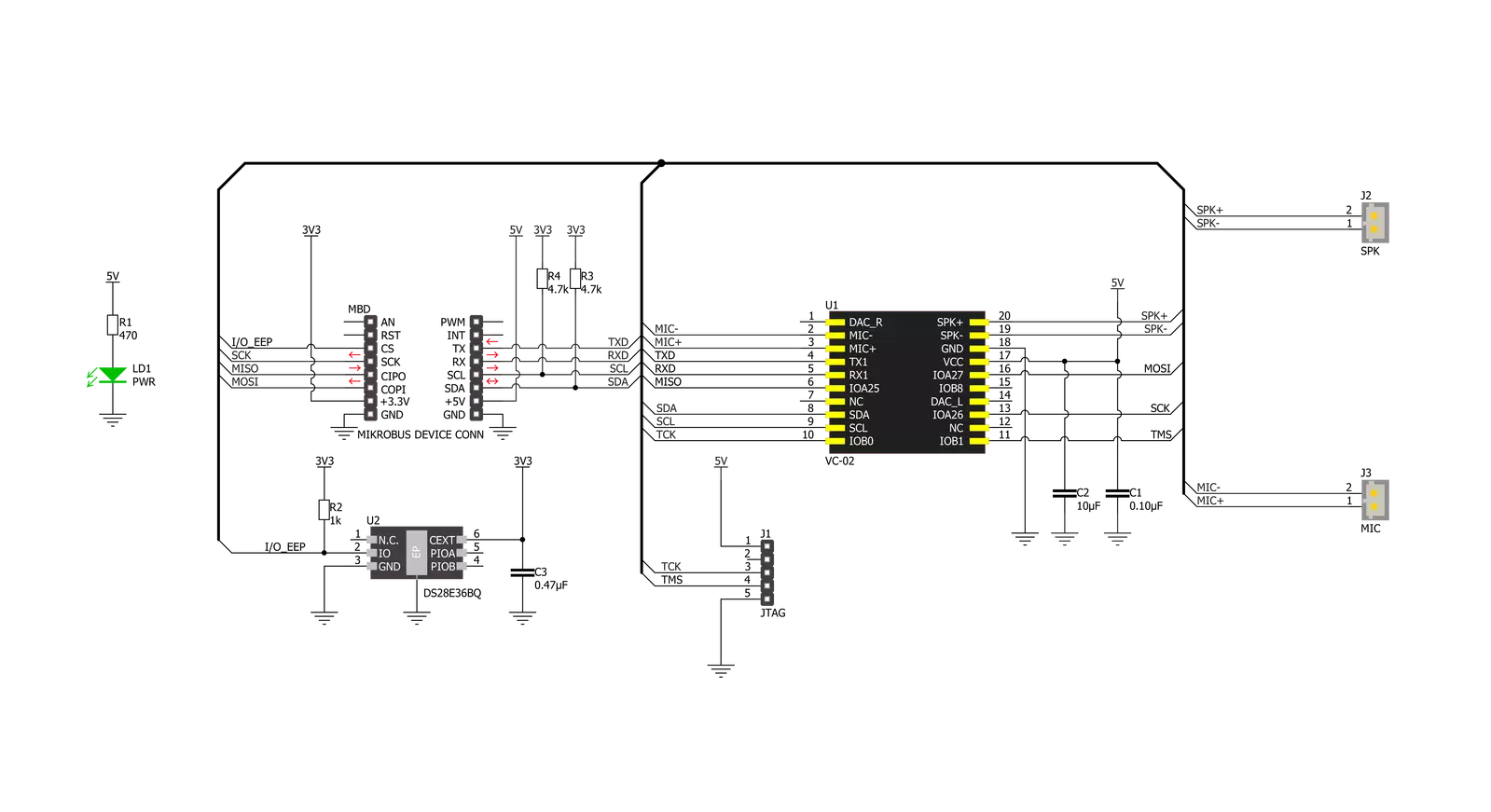
Step by step
Project assembly
Software Support
Library Description
This library contains API for SpeakUp 3 Click driver.
Key functions:
speakup3_generic_readThis function reads a desired number of data bytes by using UART serial interface.speakup3_wait_for_replyThis function waits up to @b wait_ms for a reply to the voice command.
Open Source
Code example
The complete application code and a ready-to-use project are available through the NECTO Studio Package Manager for direct installation in the NECTO Studio. The application code can also be found on the MIKROE GitHub account.
/*!
* @file main.c
* @brief SpeakUp 3 Click Example.
*
* # Description
* This example demonstrates the use of the SpeakUp 3 Click board by reading
* and displaying the voice commands reply messages.
*
* The demo application is composed of two sections :
*
* ## Application Init
* Initializes driver and logger.
*
* ## Application Task
* Waits for the reply message to a voice command and displays it on the USB UART.
*
* ## Additional Function
* - static void speakup3_display_reply ( void )
*
* @author Stefan Filipovic
*
*/
#include "board.h"
#include "log.h"
#include "speakup3.h"
static speakup3_t speakup3;
static log_t logger;
/**
* @brief SpeakUp 3 display reply function.
* @details This function displays on the USB UART the reply message for the selected
* reply instruction code.
* @param[in] reply_ins : Reply instruction code.
* @return None.
* @note None.
*/
static void speakup3_display_reply ( uint8_t reply_ins );
void application_init ( void )
{
log_cfg_t log_cfg; /**< Logger config object. */
speakup3_cfg_t speakup3_cfg; /**< Click config object. */
/**
* Logger initialization.
* Default baud rate: 115200
* Default log level: LOG_LEVEL_DEBUG
* @note If USB_UART_RX and USB_UART_TX
* are defined as HAL_PIN_NC, you will
* need to define them manually for log to work.
* See @b LOG_MAP_USB_UART macro definition for detailed explanation.
*/
LOG_MAP_USB_UART( log_cfg );
log_init( &logger, &log_cfg );
log_info( &logger, " Application Init " );
// Click initialization.
speakup3_cfg_setup( &speakup3_cfg );
SPEAKUP3_MAP_MIKROBUS( speakup3_cfg, MIKROBUS_1 );
if ( UART_ERROR == speakup3_init( &speakup3, &speakup3_cfg ) )
{
log_error( &logger, " Communication init." );
for ( ; ; );
}
log_info( &logger, " Application Task " );
}
void application_task ( void )
{
uint8_t reply_ins;
if ( SPEAKUP3_OK == speakup3_wait_for_reply ( &speakup3, &reply_ins, 1000 ) )
{
speakup3_display_reply ( reply_ins );
}
}
int main ( void )
{
/* Do not remove this line or clock might not be set correctly. */
#ifdef PREINIT_SUPPORTED
preinit();
#endif
application_init( );
for ( ; ; )
{
application_task( );
}
return 0;
}
static void speakup3_display_reply ( uint8_t reply_ins )
{
log_printf( &logger, " Reply: " );
switch ( reply_ins )
{
case SPEAKUP3_INS_ENTER_WAKE_UP:
{
log_printf( &logger, "Hi, how can I help? / Hi, what's up? / Yes, I'm here.\r\n" );
break;
}
case SPEAKUP3_INS_EXIT_WAKE_UP:
{
log_printf( &logger, "See you later.\r\n" );
break;
}
case SPEAKUP3_INS_LEARN_MATCH_AC:
{
log_printf( &logger, "OK, match the air conditioner.\r\n" );
break;
}
case SPEAKUP3_INS_AC_TURN_ON:
{
log_printf( &logger, "OK, turn on the air conditioner.\r\n" );
break;
}
case SPEAKUP3_INS_AC_TURN_OFF:
{
log_printf( &logger, "OK, turn off the air conditioner.\r\n" );
break;
}
case SPEAKUP3_INS_AC_MODE_AUTO:
{
log_printf( &logger, "OK, automatic mode.\r\n" );
break;
}
case SPEAKUP3_INS_AC_MODE_COLD:
{
log_printf( &logger, "OK, cold mode.\r\n" );
break;
}
case SPEAKUP3_INS_AC_MODE_HEAT:
{
log_printf( &logger, "OK, heat mode.\r\n" );
break;
}
case SPEAKUP3_INS_AC_MODE_DRY:
{
log_printf( &logger, "OK, dry mode.\r\n" );
break;
}
case SPEAKUP3_INS_AC_MODE_FAN:
{
log_printf( &logger, "OK, fan mode.\r\n" );
break;
}
case SPEAKUP3_INS_AC_MODE_SLEEP:
{
log_printf( &logger, "OK, sleeping mode.\r\n" );
break;
}
case SPEAKUP3_INS_AC_WIND_AUTO:
{
log_printf( &logger, "OK, automatic fan.\r\n" );
break;
}
case SPEAKUP3_INS_AC_WIND_LOW:
{
log_printf( &logger, "OK, low fan.\r\n" );
break;
}
case SPEAKUP3_INS_AC_WIND_MID:
{
log_printf( &logger, "OK, medium fan.\r\n" );
break;
}
case SPEAKUP3_INS_AC_WIND_HIGH:
{
log_printf( &logger, "OK, high fan.\r\n" );
break;
}
case SPEAKUP3_INS_AC_WIND_INC:
{
log_printf( &logger, "OK, higher the fan.\r\n" );
break;
}
case SPEAKUP3_INS_AC_WIND_DEC:
{
log_printf( &logger, "OK, lower the fan.\r\n" );
break;
}
case SPEAKUP3_INS_AC_TMP_16:
{
log_printf( &logger, "OK, sixteen centigrade.\r\n" );
break;
}
case SPEAKUP3_INS_AC_TMP_17:
{
log_printf( &logger, "OK, seventeen centigrade.\r\n" );
break;
}
case SPEAKUP3_INS_AC_TMP_18:
{
log_printf( &logger, "OK, eighteen centigrade.\r\n" );
break;
}
case SPEAKUP3_INS_AC_TMP_19:
{
log_printf( &logger, "OK, nineteen centigrade.\r\n" );
break;
}
case SPEAKUP3_INS_AC_TMP_20:
{
log_printf( &logger, "OK, twenty centigrade.\r\n" );
break;
}
case SPEAKUP3_INS_AC_TMP_21:
{
log_printf( &logger, "OK, twenty one centigrade.\r\n" );
break;
}
case SPEAKUP3_INS_AC_TMP_22:
{
log_printf( &logger, "OK, twenty two centigrade.\r\n" );
break;
}
case SPEAKUP3_INS_AC_TMP_23:
{
log_printf( &logger, "OK, twenty three centigrade.\r\n" );
break;
}
case SPEAKUP3_INS_AC_TMP_24:
{
log_printf( &logger, "OK, twenty four centigrade.\r\n" );
break;
}
case SPEAKUP3_INS_AC_TMP_25:
{
log_printf( &logger, "OK, twenty five centigrade.\r\n" );
break;
}
case SPEAKUP3_INS_AC_TMP_26:
{
log_printf( &logger, "OK, twenty six centigrade.\r\n" );
break;
}
case SPEAKUP3_INS_AC_TMP_27:
{
log_printf( &logger, "OK, twenty seven centigrade.\r\n" );
break;
}
case SPEAKUP3_INS_AC_TMP_28:
{
log_printf( &logger, "OK, twenty eight centigrade.\r\n" );
break;
}
case SPEAKUP3_INS_AC_TMP_29:
{
log_printf( &logger, "OK, twenty nine centigrade.\r\n" );
break;
}
case SPEAKUP3_INS_AC_TMP_30:
{
log_printf( &logger, "OK, thirty centigrade.\r\n" );
break;
}
case SPEAKUP3_INS_AC_TMP_INC:
{
log_printf( &logger, "OK, warmer.\r\n" );
break;
}
case SPEAKUP3_INS_AC_TMP_DEC:
{
log_printf( &logger, "OK, cooler.\r\n" );
break;
}
case SPEAKUP3_INS_AC_SWEPT_ON:
{
log_printf( &logger, "OK, start to fan.\r\n" );
break;
}
case SPEAKUP3_INS_AC_SWEPT_OFF:
{
log_printf( &logger, "OK, stop to fan.\r\n" );
break;
}
case SPEAKUP3_INS_AC_SWEPT_VERT:
{
log_printf( &logger, "OK, air swing up and down.\r\n" );
break;
}
case SPEAKUP3_INS_AC_SWEPT_CROSS:
{
log_printf( &logger, "OK, air swing left and right.\r\n" );
break;
}
case SPEAKUP3_INS_SET_RESTORE:
{
log_printf( &logger, "OK, air conditioner reset.\r\n" );
break;
}
default:
{
log_printf( &logger, "Unknown.\r\n" );
break;
}
}
}
// ------------------------------------------------------------------------ END
Additional Support
Resources
Category:Speech recognition
























